Stefano Borgo
Towards socially-competent and culturally-adaptive artificial agents Expressive order, interactional disruptions and recovery strategies
Aug 06, 2023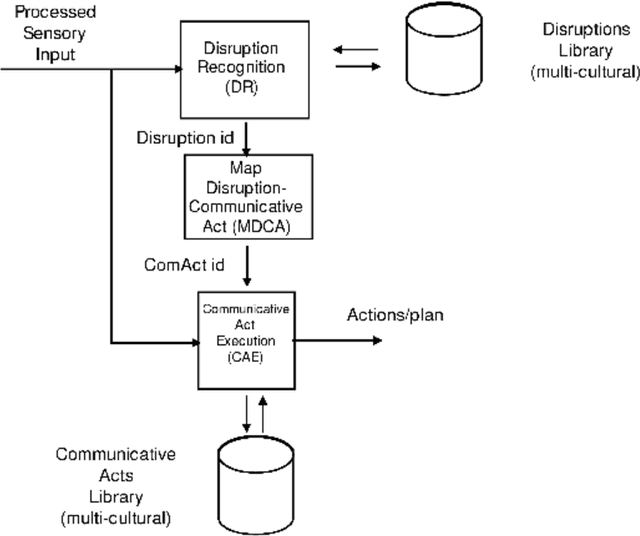
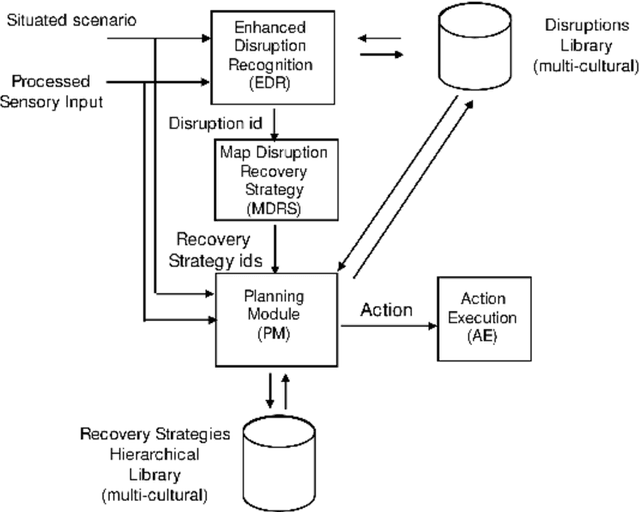
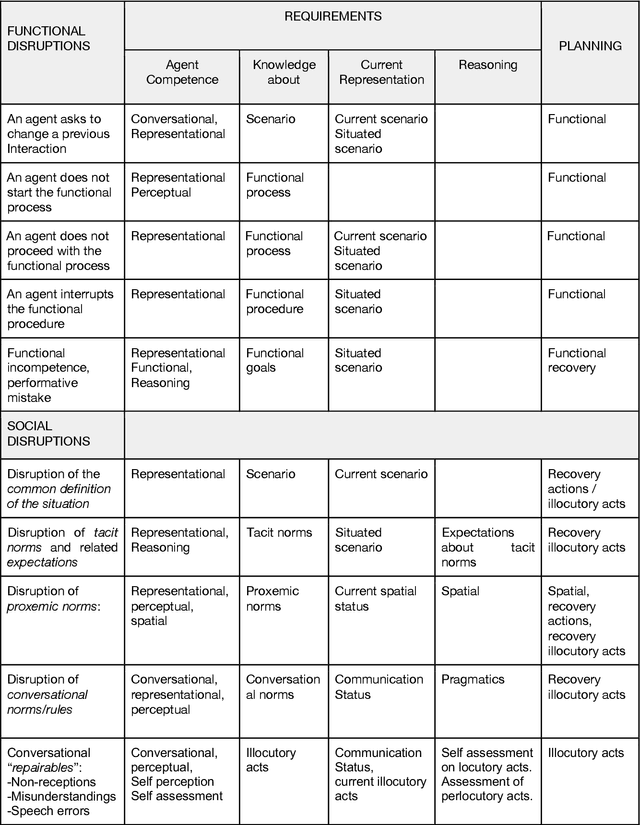
Abstract:The development of artificial agents for social interaction pushes to enrich robots with social skills and knowledge about (local) social norms. One possibility is to distinguish the expressive and the functional orders during a human-robot interaction. The overarching aim of this work is to set a framework to make the artificial agent socially-competent beyond dyadic interaction-interaction in varying multi-party social situations-and beyond individual-based user personalization, thereby enlarging the current conception of "culturally-adaptive". The core idea is to provide the artificial agent with the capability to handle different kinds of interactional disruptions, and associated recovery strategies, in microsociology. The result is obtained by classifying functional and social disruptions, and by investigating the requirements a robot's architecture should satisfy to exploit such knowledge. The paper also highlights how this level of competence is achieved by focusing on just three dimensions: (i) social capability, (ii) relational role, and (iii) proximity, leaving aside the further complexity of full-fledged human-human interactions. Without going into technical aspects, End-to-end Data-driven Architectures and Modular Architectures are discussed to evaluate the degree to which they can exploit this new set of social and cultural knowledge. Finally, a list of general requirements for such agents is proposed.
DOLCE: A Descriptive Ontology for Linguistic and Cognitive Engineering
Aug 03, 2023Abstract:DOLCE, the first top-level (foundational) ontology to be axiomatized, has remained stable for twenty years and today is broadly used in a variety of domains. DOLCE is inspired by cognitive and linguistic considerations and aims to model a commonsense view of reality, like the one human beings exploit in everyday life in areas as diverse as socio-technical systems, manufacturing, financial transactions and cultural heritage. DOLCE clearly lists the ontological choices it is based upon, relies on philosophical principles, is richly formalized, and is built according to well-established ontological methodologies, e.g. OntoClean. Because of these features, it has inspired most of the existing top-level ontologies and has been used to develop or improve standards and public domain resources (e.g. CIDOC CRM, DBpedia and WordNet). Being a foundational ontology, DOLCE is not directly concerned with domain knowledge. Its purpose is to provide the general categories and relations needed to give a coherent view of reality, to integrate domain knowledge, and to mediate across domains. In these 20 years DOLCE has shown that applied ontologies can be stable and that interoperability across reference and domain ontologies is a reality. This paper briefly introduces the ontology and shows how to use it on a few modeling cases.
* 25 pages, 7 figures
On Coreferring Text-extracted Event Descriptions with the aid of Ontological Reasoning
Dec 01, 2016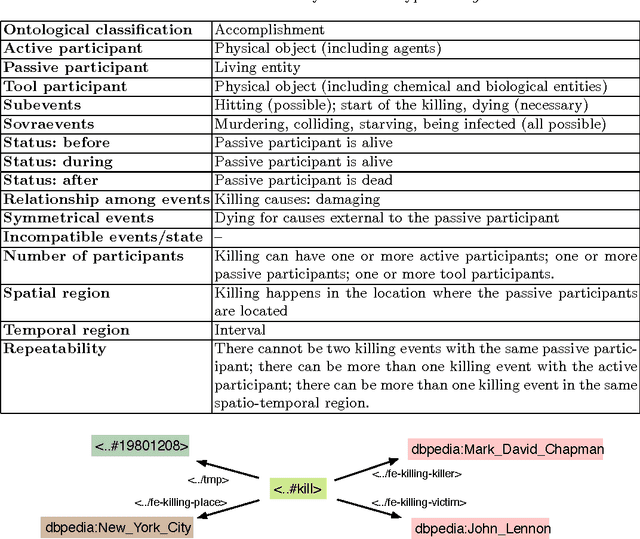
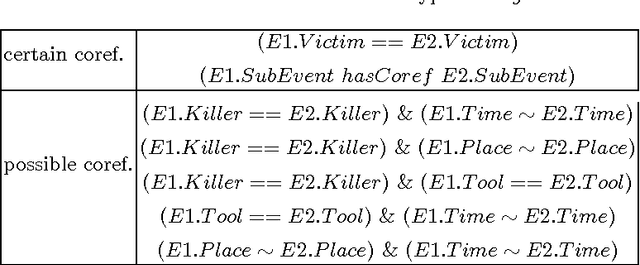

Abstract:Systems for automatic extraction of semantic information about events from large textual resources are now available: these tools are capable to generate RDF datasets about text extracted events and this knowledge can be used to reason over the recognized events. On the other hand, text based tasks for event recognition, as for example event coreference (i.e. recognizing whether two textual descriptions refer to the same event), do not take into account ontological information of the extracted events in their process. In this paper, we propose a method to derive event coreference on text extracted event data using semantic based rule reasoning. We demonstrate our method considering a limited (yet representative) set of event types: we introduce a formal analysis on their ontological properties and, on the base of this, we define a set of coreference criteria. We then implement these criteria as RDF-based reasoning rules to be applied on text extracted event data. We evaluate the effectiveness of our approach over a standard coreference benchmark dataset.
 Add to Chrome
Add to Chrome Add to Firefox
Add to Firefox Add to Edge
Add to Edge